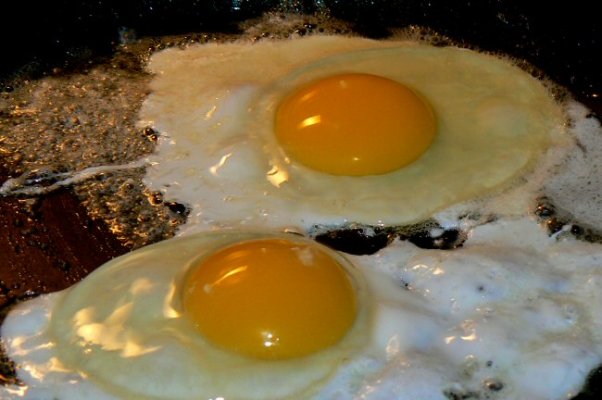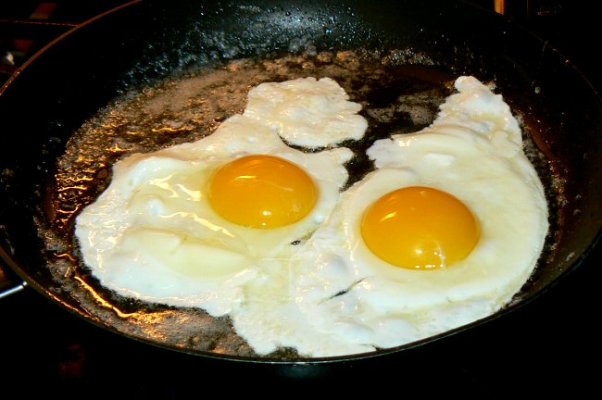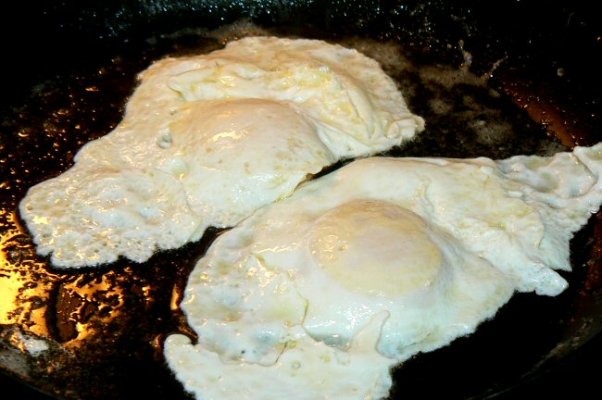I added more to my post. It took longer thn was allowed under the edit function. Hre is the edited post.
I apologize. I did see that in the beginning, you did state that you were using a ceramic pan. I just got lost from reading many of the comments. I did a bit of research into the Greenpan product and found this -
https://www.centurylife.org/in-depth-product-review-green-pan-hard-anodized-non-stick-ceramic-covered-fry-pan-also-known-as-lima-paris-original-greenpan-greenlife-and-greenlife/. It appears to be a good review.
Personally, I have found that ceramic pans are not quite as non-stick as are Teflon pans. That being said, they still are pretty easy to clean up. I agree with the author of the link that rather than pouring oil into the pan when hot, use a silicone brush, or paper towel to rub a thin film of oil to complete;y cover the bottom and sides of the pan with a thin film of oil (fat).
Except for my pancake griddle, I use either stainless steel,carbon steel, or cast iron pots and pans, as when well seasoned, They are as non-stick as ceramic, and teflon, but are nearly indestrctable, and much more versatile. I use teflon coated aluminum for my pancake griddle because it eliminates hot spots due to aluminum's heat cinductivity. But then again, I have a heat diffuser that I use with my cast iron pans to do the same on my gas ccoktop.
I really don't know what to tell you that hasn't already been said about cooking your fried eggs, except to use fresh eggs as they will hold their shape better and ot be so thin at the edges. After that, using a greased (buttered) egg ring, with a lid, or a poaching cup will give you what you want.
Personally, I have been successfully cooking fried eggs since the age of about ten years. I am now almost 65 years of age. I have never had the issues you are having. When I wanted a more delicate egg (softer white with no runny yolk) I placed the egg into the pan, with a little bacon fat, and seasoned it with S & P. I let it cook until the whites started to solidify, added about 2 tbs. water and covered the pan with a lid. I let it cook for another minute and had just what I desired.
K now this about eggs. There are differing stages of firmness that an egg white undergoes when cooking. The first stage is when the white has solidified and is no longer runny. It is tender, and moist. As you cook it longer, thr proteins crunch up, or tighten up, going from tender to more dry, and eventually, rubbery. After that stage, they begin to become like plastic in texture. After that, they become delicately crispy.
The yolks go from soft and highly flavorful, to semi-soft, with an almost paste-like consistency, to solid, but tender, to dry, to discolored and very dry.
The trick is to get the yolks to the degree of oneness you desire, while getting the whites just right. This should be relatively easy as yolks solidify at a lower temperature than does the white. The problem is that the yolk is in a thick mound, while the wite spreads out. That means tha applied heat will be absorbed more quickly into the white, as it has less material per unit/volume to absorb into. This is again why the egg rings, and poaching cups work so well. They keep the whites as thick as the yolk. However, because the whites are so thick, steam is required to cook from the top down as well as the heat from the cooking surface to ensure that the whites are cooked through.
If you are fillkng your pan with eggs, as you say you are, they shouldn't spread out. abut you need to get a cover for your pan, and add a couple tbs. of water, then cover. You won't need to flip your eggs, and they will be cooked through, both white, and yolk.
If you still can't make this work, learn to poach eggs in salted water, or a poaching pan, ot learn to make boiled eggs. They are both very easy to make.
Possibly, the best way to lear how to make the fried eggs you crave, is to find a friend, or relative who knows how to cook them, and watch what they do. Then do what they do.
Without being at your home, watching what you are doing, we can only give you our advise, and tell you what works for us. And worded descriptions, no matter how detailed, can only tell us so much. You just have to work within the laws of physics, and watch how the egg reacts to thr heat, and cooking techniques you are using, then adjust your technique until you get the results you desire. None of us can do it for you. I would hazard to say that all of us who have given advise, have learned how to cook by trial and error. We learned from both our success, and our failures, and developed our cooking skills after years of practice. I'm afraid you will have to do the same. There are no magic pans, no magic recipes. Like any other skill, be it welding, painting, fishing rod building, skiing, or any other, you just have to do it, and keep on doing it, until you learn to do it properly.
Seeeeeya; Chief Longwind of the No



